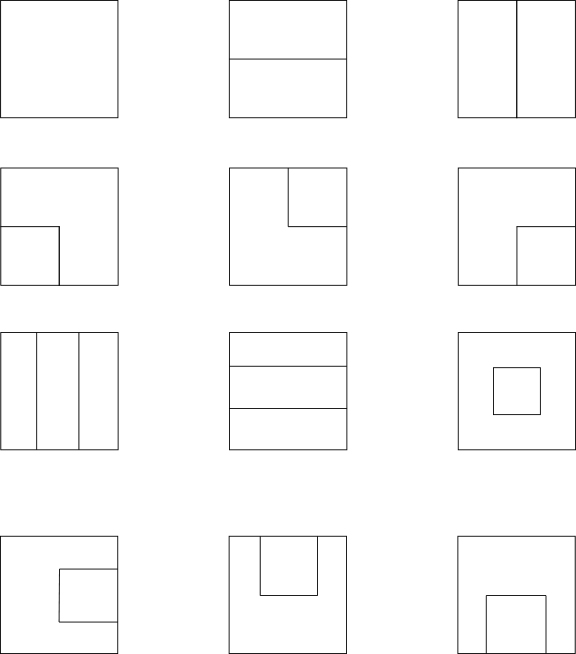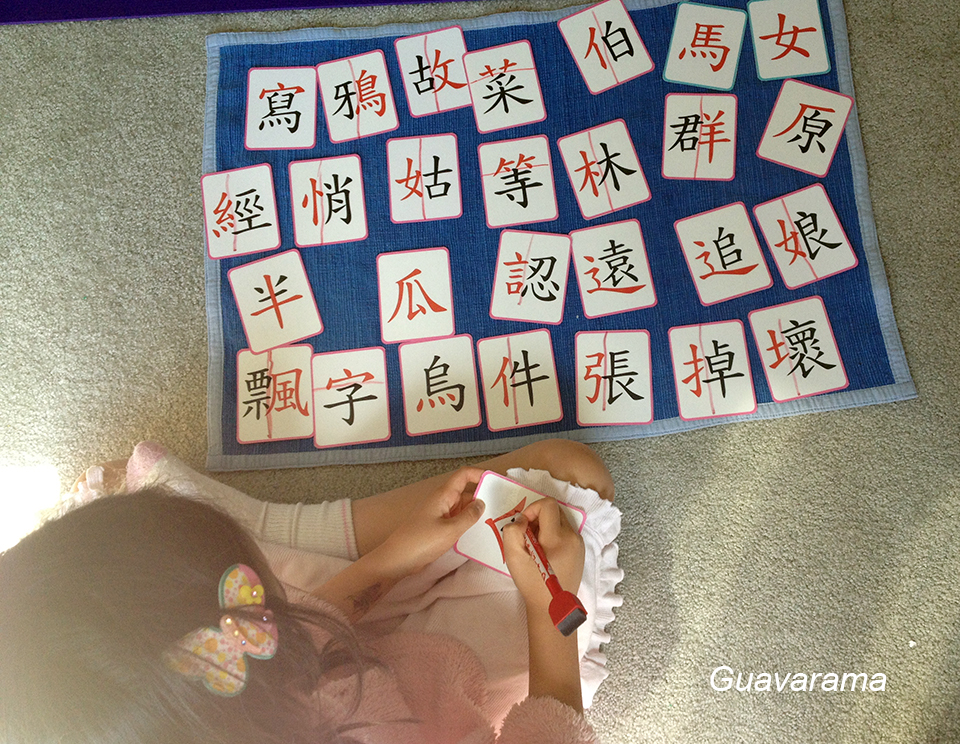This week, I finally decided that I cannot wait until I make the material for learning about character structures. We’re not making headway in the writing department if I keep waiting and waiting. Last weekend I finally read through about half of the almost 300 page research paper on character components and how to teach character recognition. I was going to do some gianormous post about what I learned and how I’m thinking of teaching this. But, I had a lot of fun with my presentation so I’m going to write it piecemeal instead.
Some Background First
Teaching character structure is probably the second step after teaching stroke names. I will teach stroke order right before we start writing probably. Instead of some nomenclature cards, I just whipped out my little whiteboard and the two cheat sheets I printed from the research paper. There is about 12 basic Chinese character structure. The structures is a way for you to kind of “split” the character into different character components. Typically this is because of spacing or because you can split it into 2 separate components.
For example, most characters have a left right split like 好. You can naturally draw a line and split the character in half. The character 香 has a top an bottom split because you can split that word into the components 禾 on top and 日 on the bottom. Anyways, the 12 structures are:

If you look online you will see many list 14 or 16. The research paper lists an additional 8. It kind of sub-divides some of these “sections”. Like, 彎, it’s a top/bottom character, but the top can be sub-divided into 3 sections.
There is also the issue of character shape. Not sure how else I should describe it? For example, for the word 土, though it is two left-right strokes, one is shorter than the other and it looks like a triangle. Or for the character 三, again, 3 left-right strokes (一橫) if you just go by stroke name, but they’re of different lengths in order for it to look nice in a square. I had read really quickly through a paper last week on why we do stroke order the way it is, and how strokes are changed in order for it to look pretty. For example, the character 林 are made of two of the same character component 木. But the stroke of the left 木 changes in order for the component to fit nicely next to the right 木. I realized looking through Thumper’s writing this week that she does not know this. Strokes are long where they should be short, etc. Hopefully knowing all of these background info will allow her to be mindful when she writes.
Presentation
I kind of winged it as I go. We started the second book of Pink Series this week so Thumper laid out all the cards from the first book plus 6 more from the second. Astroboy wanted in on the fun so he also laid out his 20+- characters from his second book of the Blue Series. Then I drew a square and told her that when we write Chinese characters the goal is to write it centered in a square. I drew a few where characters weren’t centered and we talked about how that didn’t look good.
Then I said that in order for these characters to be centered, we need to look at the parts of the character components that make up the character when we write, to make sure that they are centered overall. For example, for the character 林, you would not want to squeeze it onto the left side of the square, or for half of the 林 to be on the far left and the other half far right. I then drew a line down the square to show how the character is split.

Thumper was then asked to find all the characters laid out on the rug that had a left/right split. We used a whiteboard marker and drew the splitting line on these flashcards. Going through the various structures, we tried to find all the cards that fit and draw the splitting line. Of course not all of them were on the mat, I had to pull a few of the super common characters off of other series flashcards instead (like 圓). Astroboy got onto the action and drew on his with my directions. I had to tell him that the split is where there is a space in the character or split along smaller words. He could not see it really. It’s not an exact science actually, that’s why there is a whole research paper on the subject of how to find character components.
The last thing I talked to Thumper about was that in order for the characters to look nice, it’s not an even split like my drawing. Many times it’s more like a 30/70 split or 20/80 split. For example, 他 is split in two but the left side is much smaller than the right. Next week I’m also going to get into character shape and stroke changes as well..
All of this took about 30 minutes or so and by the the kids were tired. So we erased the lines and played their new favorite game, “Find the Character”. All in all it was a super good day. The kids had fun looking


Hi. I stumbled upon your site because I’m searching for fun ways to teach Chinese to my son. Your site is awesome! And I’m amazed that you’re so good in both English and Chinese, much to my envy ?. I’m from Malaysia and I was sent to Malay school. I am sad for not being able to learn Chinese although I’m a Chinese. It took me years to develop my vocabulary in Chinese through speaking with friends and going to Chinese medium church. Now that it’s my turn to be a parent, I send my son to a Chinese school. The problem is I don’t know how to teach him Chinese! I’m looking everywhere for help as I don’t want to get a tuition teacher for him, at least not so early and especially when the cost is so high. I do hope you can share more on how to teach Chinese. I have been forcing him to memorize and it’s a painful experience. He has 听写twice a week which really tense me up. ?? If he can’t cope at the beginning of school, he is not going to cope when the syllabus becomes tougher. Please do advise. Thank you!
You might want to join the Raising Bilingual Children in Chinese and English group. Lots of options there. For me, the order should be listening/speaking, reading writing. I don’t know how old your son is but if he’s young the focus should be as complete a Chinese environment as possible before the age of 5, preferably 6 or 7. Reading/writing comes so much easier once that happens. Think about your own mother tongue and how much harder it would be to learn to read/write while learning to listen/speak.
Listening/Speaking is either through videos, audio, etc. and you have to get a tutor or something before then. The more you get in before 7 the easier it is to maintain.